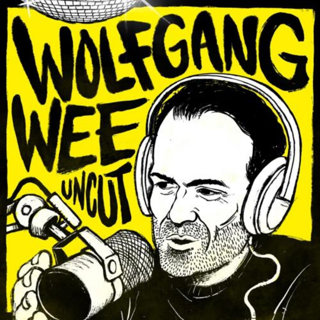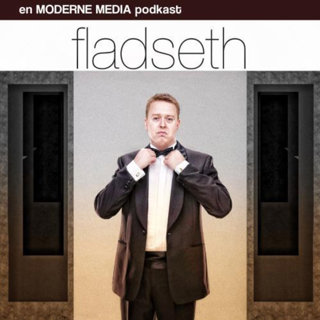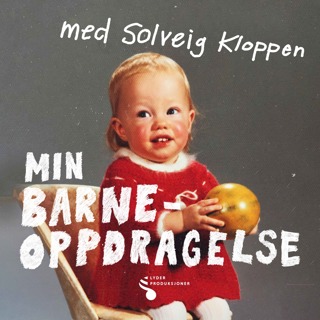
Stanley Payne, “The Spanish Civil War” (Cambridge UP, 2012)
The Spanish Civil War is one of those events that I have always felt I should know more about. Thanks to Stanley Payne‘s concise, lucid new work on the subject, I feel less that way. I do not exaggerate when I say that Payne, a Professor Emeritus at the University of Wisconsin, is the nation’s foremost expert on Spanish history and on historical fascism in general. That expertise shines in this book and really comes to the fore in this interview. Published by Cambridge University Press as part of its Essential Histories series, Payne’s work synthesizes a lifetime of study in Spain, laying out the origins of the civil war in Spain’s deeply fractured political culture, and tracing the international and military developments that led to Francisco Franco’s eventual triumph in 1939. As Payne points out, the Spanish Civil War has been mythologized for political purposes since the day it began, much to the detriment of our understanding of the real story. The details of how and why the war began, how it was fought, and what was at stake have too-often been lost in a public effort to assign blame or capture the war’s legacy for political purposes. Payne revels in debunking some of these myths while carefully balancing conflicting arguments and accounts. Enjoy. Learn more about your ad choices. Visit megaphone.fm/adchoices Support our show by becoming a premium member! https://newbooksnetwork.supportingcast.fm/military-history
13 Mar 201357min

Bernard Kelly, “Returning Home: Irish Ex-Servicemen and the Second World War” (Merrion, 2012)
The Republic of Ireland (aka The Irish Free State, Eire) declared neutrality during the Second World War. That wasn’t particularly unusual: Portugal, Spain, Sweden, and Switzerland did too. Yet around 60,000 “neutral” Irish volunteered to fight on one side (with the Allies, in this case). That was unusual. After the war, most of the Irish volunteers remained in the UK. But 12,000 of them came back to Ireland. In Returning Home: Irish Ex-Servicemen and the Second World War (Merrion, 2012), Bernard Kelly tells their story. Like most things in Irish history, it’s complicated. On the one hand, the volunteers had served in the armed forces of Ireland’s archenemy (at least according to Republicans). On the other hand, they had fought the Nazis and thereby protected the Free World. Bernard explains how the Irish veterans were received and, interestingly, how they are still being discussed in Ireland today. Learn more about your ad choices. Visit megaphone.fm/adchoices Support our show by becoming a premium member! https://newbooksnetwork.supportingcast.fm/military-history
21 Feb 201357min

Sanders Marble, “Scraping the Barrel: The Military Use of Substandard Manpower, 1860-1960” (Fordham UP, 2012)
Sanders Marble, senior historian of the United States Army’s Office of Medical History, presents a collection of essays related to the problems of substandard manpower as defined at different times in Western militaries over the modern era. Accordingly normally rigorous peacetime entrance standards have established conditions for the exclusion of certain individuals on the basis of physical, intellectual, ethnic, and racial criteria. During conflict, however, such notions of exclusion and exceptionalism are modified to reflect the needs of the army relative to the specific crisis. Marble’s Scraping the Barrel: The Military Use of Substandard Manpower, 1860-1960 (Fordham University Press, 2012) examines eleven case studies related to so-called “substandard manpower,” offering a series of assessments on military force structure in wartime. in this interview, our host talks with Sanders Marble about the overall project and his specific essay on American forces in the twentieth century, “Below the Bar: The U.S. Army and Limited Service Manpower.” He also speaks briefly with sociologist Thomas Sticht about his contribution to the volume, a deep analysis of the Department of Defense’s much-maligned “Project 100,000” in the essay “Project 100,000 in the Vietnam War and Afterward.” Learn more about your ad choices. Visit megaphone.fm/adchoices Support our show by becoming a premium member! https://newbooksnetwork.supportingcast.fm/military-history
28 Jan 20131h 1min

Frank Ellis, “The Damned and the Dead: The Eastern Front through the Eyes of Soviet and Russian Novelists” (University Press of Kansas, 2011)
Frank Ellis’ The Damned and the Dead: The Eastern Front through the Eyes of Soviet and Russian Novelists (University Press of Kansas, 2011) introduces to English-language readers the riches of Soviet war literature and argues that much of that literature constituted a meaningful form of resistance to the Soviet state. Refusing to write stories that corresponded to the mythology of the Soviet soldier-hero, authors such as Vasilii Grossman, Iurii Bondarev, or Vasil’ Bykov provided true insights into the Soviet war effort, including the bungling of the leadership, the deprivations suffered by the soldiers, and the stifling effect of ideological surveillance. This wide-ranging interview also touches upon some of Ellis’ other interests and should excite listeners to track down some of the few Soviet war novels available in English. I know that the work mentioned in Ellis’ title, The Damned and the Dead, by Viktor Astaf’ev is on my reading list. Learn more about your ad choices. Visit megaphone.fm/adchoices Support our show by becoming a premium member! https://newbooksnetwork.supportingcast.fm/military-history
5 Des 201253min

John C. McManus, “September Hope: The American Side of a Bridge Too Far” (NAL, 2012)
This past September saw the sixty-eighth anniversary of one of the European Theater of Operations’ most familiar operations. Conceived by Field Marshal Bernard Law Montgomery, MARKET GARDEN was the Western Allies’ great gamble in the fall of 1944. With the Nazi war machine appearing to be on the ropes following its ignominious collapse in France, victory seemed for a brief moment to be just within grasp. The single problem, in Montgomery’s eyes, was logistics and the inability of the Anglo-American coalition to maintain the broad front strategy promoted by SHAEF commander, General Dwight D. Eisenhower. By offering a bold departure from his normal cautious outlook, Montgomery convinced Eisenhower to favor his Army Group with the supplies needed to carry out a bold stroke aimed at the lower Rhine crossings in Holland. Through an airborne coup de main, the Allies would seize three highway bridges at Nijmegen, Eindhoven, and Arnhem, opening up a pathway into the North German Plain, and in Montgomery’s view, very likely end the war by Christmas. Of course, we know the operation was a dismal failure, with the British First Airborne Division nearly annihilated at Arnhem, as Montgomery went “a bridge too far,” in the words of journalist cum historian Cornelius Ryan. Indeed by this point, with numerous historical monographs and edited collections, a feature film, dozens of documentaries, an HBO miniseries, and more board games and computer games than can be counted, one might be forgiven for thinking that there is little left to be said about Operation MARKET GARDEN. But then along came historian John C. McManus‘ exhaustive study of the American dimension of the battles for the Dommel, Maas, and Waal River crossings and the subsequent bitter winter fighting on the so-called “Island” between the Waal and the Lower Rhine estuary. His book, September Hope: The American Side of a Bridge Too Far (NAL, 2012), is built from a treasure trove of oral testimonies, official after action reports, captured documents, and other sources to create the single most comprehensive account of the fighting from the perspective of the US 82nd and 101st Airborne Divisions, as well as the 104th Infantry and 7th Armored Divisions. The book is a very compelling account of a very bitter and misguided operation, but its true strength lies in McManus’ own insights and conclusions regarding the viability of the operation and the failings in SHAEF leadership than allowed the operation to go forward. Learn more about your ad choices. Visit megaphone.fm/adchoices Support our show by becoming a premium member! https://newbooksnetwork.supportingcast.fm/military-history
4 Nov 20121h 4min

Ben Shepherd, “Terror in the Balkans: German Armies and Partisan Warfare” (Harvard UP, 2012)
With Terror in the Balkans: German Armies and Partisan Warfare (Harvard University Press, 2012), Ben Shepherd, a Reader at Glasgow Caledonian University, offers us insight into the complex and harrowing history of the German Army’s occupation of the former Yugoslavia from 1941-1943. By analyzing the command structures at the divisional and regimental level, Shepherd helps to explain how and why the violence ebbed and flowed in the various occupied regions. But he also looks further down, to see how the behavior of specific units was shaped by the vagaries of terrain, supply, the character of the opposition, and even certain commanders’ backgrounds and experiences. Always cautious not to make claims beyond the limits of his evidence, Shepherd nevertheless draws important conclusions about how history, personality, and National Socialist ideology shaped the behavior of the German Army in the Second World War. For that and for illuminating in clear and concise prose the foggy and chaotic political and military environment in the Balkans during those years, Shepherd should be congratulated. Learn more about your ad choices. Visit megaphone.fm/adchoices Support our show by becoming a premium member! https://newbooksnetwork.supportingcast.fm/military-history
26 Sep 201247min

Gregory Crouch, “China’s Wings” (Bantam Books, 2012)
When I was a kid I loved the movie “The Flying Tigers.” You know, the one with John Wayne about the intrepid American volunteers sent to China to fight the Japanese before the United States really could fight the Japanese. I recall building a model of one of their P-40 Warhawks with their distinctive “shark’s mouth” nose art. And though I knew a lot about The Flying Tigers, I didn’t really know much about the Big Picture in which they operated. Thanks to Gregory Crouch‘s fine China’s Wings: War, Intrigue, Romance, and Adventure in the Middle Kingdom during the Golden Age of Flight (Bantam Books, 2012), I do. Greg does not tell the story of The Tigers; he tells the story of the aviation pioneers who made The Tigers possible. These were the man of the China National Aviation Corporation. They brought commercial aviation to China, which is an excellent tale in itself. But they also volunteered to fight the Japanese even before The Tigers entered the picture. Importantly, they also blazed “the Hump,” the dangerous trans-Himalayan air route between India and China that kept the Nationalist Chinese in the game and generally provided aid and comfort to anti-Japanese forces. This is a wonderful book full of remarkable characters and unbelievable adventures. There’s a bit of romance as well. I asked Greg during the interview whether he’d sold the film rights. I imagine he will soon. Learn more about your ad choices. Visit megaphone.fm/adchoices Support our show by becoming a premium member! https://newbooksnetwork.supportingcast.fm/military-history
30 Aug 201255min

Steven H. Jaffe, “New York at War: Four Centuries of Combat, Fear, and Intrigue in Gotham” (Basic Books, 2012)
Many people – including myself – are no doubt surprised to learn about New York City’s rich four hundred year military history. I teach in Flushing, New York, deep in the heart of Queens, at one of the country’s largest public universities. And in my American History survey classes, I strive to bring as much of the city’s history to bear as possible. Now after reading Steven Jaffe‘s book, New York at War: Four Centuries of Combat, Fear, and Intrigue in Gotham (Basic Books, 2012), I realize that I could do a lot more covering New York’s military history. Jaffe escorts his reader on a dramatic tour of New York at war, from the settlement of New Amsterdam by the Dutch in 1624, to the city’s response to the September 11, 2001 attack on the World Trade Center. It is an entertaining and informative tour, and one which I can attest will certainly affect my own treatment of the city’s history in my classes. Overall New York at War is a pleasure for all readers, but it should have a special place for our listeners from the metropolitan New York area. Learn more about your ad choices. Visit megaphone.fm/adchoices Support our show by becoming a premium member! https://newbooksnetwork.supportingcast.fm/military-history
11 Aug 20121h 28min





















